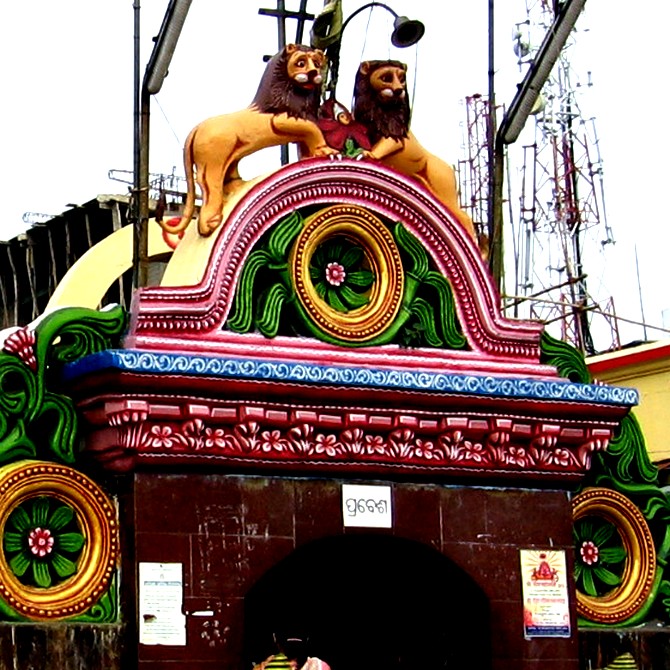Photographs: Deepak Kripalani Deepak Kripalani
The final part of Deepak Kripalani's Odisha travelogue.
Read part one here: In the land where the Lord feasts
Read part two here: Odisha travel: Exploring India's east coast
I couldn't help but stare at the traffic police every time we crossed an intersection. Used to betel nut-chewing, pregnant-looking and sloppily dressed cops in Mumbai, it took a supposedly back-of-beyond Bhubaneswar to show the world that cops can be slim, fit and sharply dressed (in white shirts tucked into well-cut navy blue trousers, black shoes, white elbow length gloves, smart hats and glares). The body language was disciplined and the gaze, business-like.
Nothing, absolutely nothing was out of place. It was a culture shock to see that most of them were women in their twenties! I wanted to salute them every time we passed by one.
Another observation: thanks to satellite television, the Net and ever-expanding retail chains, I find an increasing number of people in smaller urban centres with lifestyles similar to those of their counterparts in metros.
It wasn't so, earlier. Bhubaneswar has its fair share of smartly dressed, motorcycle riding, confident young people who could have been anywhere in the country. In a way, such influences unite a much-fragmented nation, culturally and socially.
We began the day with rasgollas. Having read somewhere that the dessert originated in Orissa, I asked Bullu, our driver, to lead me to a mithai store. He got me some instead. Under a grey sky, we raced to Cuttack, the erstwhile capital of the state 29 km to the north-east.
Our first stop was Chandi, the most famous temple in town.
Odisha travel: Bidding goodbye to the 'scenic, serene, sublime'
Image: Ratnagiri is among the sites that collectively formed the Buddhist UniversityPhotographs: Deepak Kripalani
Our next stop was outside the Barabati Cricket Stadium for a local delicacy, dahiwada-aludum (wada in watery curd served with boiled potatoes) which didn't quite appeal to my sense of taste.
The river Mahanadi flanks the city and lives up to its name. We continued our journey, crossing the 2 km long bridge across it. It is believed that Lord Jagannath will assume the incarnation of Kalki (the tenth incarnation of Vishnu) and herald the end of Kalyug at the Jagannath temple (2025) at Chatiya about 30 km to the north-east.
That isn't going to happen anytime soon. Kalyug began on 23 January 3102 BC and will last 432 000 years. Travelling further on NH 5, we branched off to the south-east towards the port of Paradip.
Ratnagiri and Lalitgiri are sites of Buddhist monasteries that collectively formed the Buddhist University Pushpagiri with Udayagiri, close by. We were the only visitors there that morning.
Imagine being on a serene hill-top monastery that goes back a thousand years, without anyone around. It felt like being in the middle of nowhere without being isolated for we were surrounded by positive energy and architecture of great beauty. The priceless experience only cost Rs 5 as entrance fee.
The Chinese Buddhist monk and scholar Hsuan Tsang (c 602-664) visited the university during his travels across India. I studied about him in school and after all these years it was uncanny to be in a place he had visited centuries ago.
Odisha travel: Bidding goodbye to the 'scenic, serene, sublime'
Image: Parasurameswar, supposedly the oldest temple of BhubaneshwarPhotographs: Deepak Kripalani
No trip to Orissa can be considered complete with tasting Chenapoda, a pudding-like milk dessert with caramelised sugar we sampled at a dhaba on the way back.
Likewise, I wasn't going to leave Bhubaneswar without visiting Parasurameswar, supposedly the oldest temple in the city, going back to the year 650.
We missed it despite being in the vicinity the previous day. We looked for it again but without luck. Bullu dropped me off at the hotel and I felt despondent at having missed out on the temple.
Stepping out, I showed its picture to the auto rickshaw driver waiting outside. He said he knew the place. I double checked. He sounded confident. 20 later my jaw dropped. I was gazing at a structure that was a product of immense dedication and labour.
It must have taken years to complete something that has outlived the team that built it, many times over, and which continues to be a source of joy to all who set their eyes on it. My pilgrimage was finally over!
Or so I thought... For the next morning as my plane took off, Lingaraj Temple revealed itself before the aircraft gained altitude and the mist closed in.




Comment
article